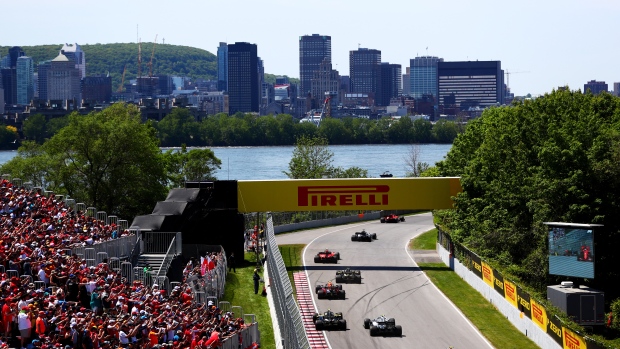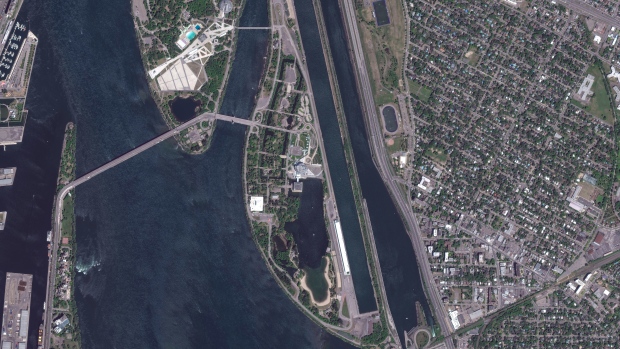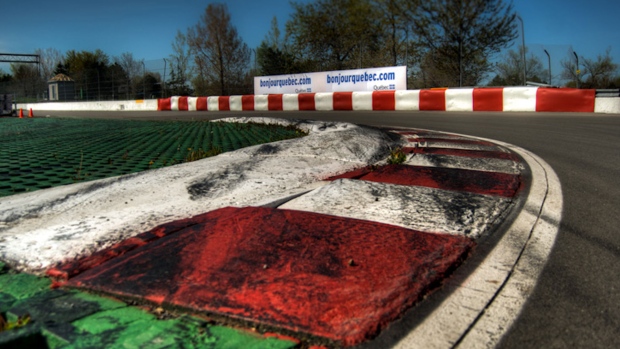Jun 16, 2022
Drivers in uncharted territory as F1 returns to Montreal
The Canadian Grand Prix is set to return to Circuit Gilles Villeneuve in Montreal for the first time since 2019 this weekend after COVID-19 forced the cancellation of the race in 2020 and 2021. As TSN Racing Analyst Tim Hauraney points out, drivers have some adjustments to make.

Drivers have been in uncharted territory all year in Formula One.
In addition to the usual upgrades cars receive throughout the season on a team-by-team basis, F1 models underwent a series of changes for 2022 aimed at reducing a loss of downforce and leading to more competitive championships.
The alterations are drastic. Gone are the 13-inch wheels, replaced by 18-inch rims with matching low-profile tires from Pirelli. The front wing was simplified to allow more airflow and the rear wing modified to create cleaner air for a car directly behind, making passing easier. A shift in the type of fuel being used and ground effects for increased aerodynamic grip have also been introduced this season.
Figuring out these changes on the fly – at speeds approaching and sometimes exceeding 200 miles per hour no less – can’t be easy. Especially on unfamiliar ground.
The Canadian Grand Prix is set to return to Circuit Gilles Villeneuve in Montreal for the first time since 2019 this weekend after COVID-19 forced the cancellation of the race in 2020 and 2021.
As TSN Racing Analyst Tim Hauraney points out, drivers have some adjustments to make.
“There’s so much data that they don’t have. In past races, with past regulations, these teams would have a pool of data that they can lean on. Like hey, when we were here last year, the car was doing this on this tire compound in this temperature for this year in Canada. They haven’t been here in two years,” he said.
“That’s going to be interesting to see how that plays out in a race, because it could throw some things off.”
As a former driver for F1 feeder series Formula Renault, Hauraney has raced in Montreal and knows first-hand the challenge the 4.361-kilometre circuit just east of the downtown core presents.
“Circuit Gilles Villeneuve is like a go-kart track. It’s a lot different from a lot of the other circuits that the drivers go to, and it’s one of the reasons why they love this track,” he said.

Hauraney explained that the way the track sets up, drivers have to get aggressive with the lines they take over chicanes, which can lead to curb-hopping depending on how sharp the angle. He points out that could be difficult in this new generation of race car.
“I don’t see how they can take a big amount of curb for some of these chicanes. Just simply because of where the car generates the downforce from,” he said.
“So if you’re jumping over a curb, you’re getting too much air underneath the race car. That’s going to stir the aero balance of the car. When it lands you’re basically losing a lot of grip.”
What happens if drivers get too combative going over chicanes?
“I have a feeling there are going to be some drivers that just push this thing a little bit more over the limit and into the walls simply because there’s no runoff. You’re going into the Wall of Champions at [over 170 mph] and you’re hopping over the first part of the chicane, like you’re literally having to launch the car over that and some people may take too much of it. If they take too much of it, then you’re into the wall for sure.”
The Wall of Champions got its name for a reason. Located just beyond the final chicane before the finish line on turns 13 and 14, the wall is known for taming some of the sport’s most decorated champions. In 1999, former world title-winners Jacques Villeneuve, Damon Hill and Michael Schumacher all slid into the wall, knocking them out of the race and handing the win to Mika Hakkinen. It’s got plenty of others over the years, too.
“You just have that wall there that bites you if you take it a little too deep,” Aston Martin driver Lance Stroll said to Hauraney about the turn.

Stroll is one of two Canadian drivers hailing from Montreal in the race this weekend, along with Williams’ Nicholas Latifi. Stroll scored his first F1 points at the Canadian GP back in 2017 and made up eight places from his start position to finish ninth in 2019. Latifi, in year three of F1, is racing professionally on Canadian soil for the first time.
“I think for both drivers, coming home for them is important. Just being back where you’re getting support,” Hauraney said.
The duo could use the boost.
Stroll, in his sixth F1 season, sits 17th on the grid with two points and is coming off an early retirement this past weekend at the Azerbaijan Grand Prix in Baku. Stroll made contact with two barriers in qualifying and was forced out by vibration issues on race day while teammate Sebastian Vettel ran a solid race for a sixth-place finish. Latifi, born in Montreal but raised in Toronto, hasn’t had much of a car to work with so far this season and is one of three drivers on the grid without a point in eight races.
But Hauraney thinks Montreal could give a boost to the two Canadians.
“I think it’s going to be huge for both of them. I think being away from home for so long is a bit of a challenge for some of these drivers. For both Lance and Nicholas this could be, it could be spot where they turn around their season,” he said.
Whether or not fans in Montreal are treated to success from the hometown drivers, having racing back on Ile Notre-Dame will be reason enough to celebrate.
“Just from the fan experience, there’s a reason why drivers love coming to Canada and one of the biggest reasons is because of the fans. Canada has some of the most passionate racing fans in the world and they know what’s going on,” Hauraney said.
“You get good crowd reactions from the storylines that are taking place on the racetrack and that sort of adds to the excitement of the entire race. I think Montreal just does an incredible job.”
